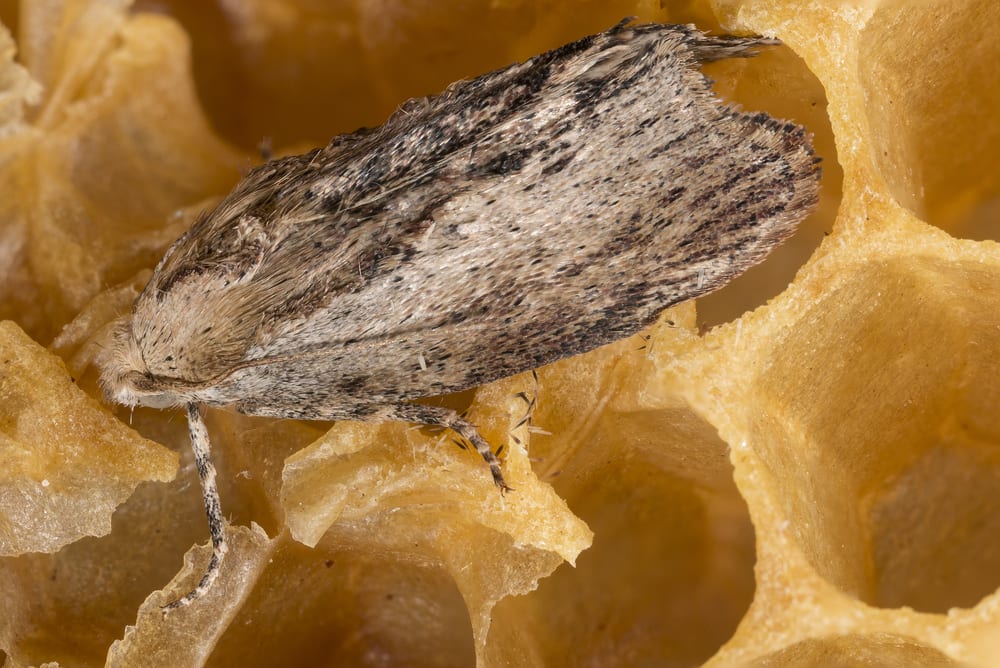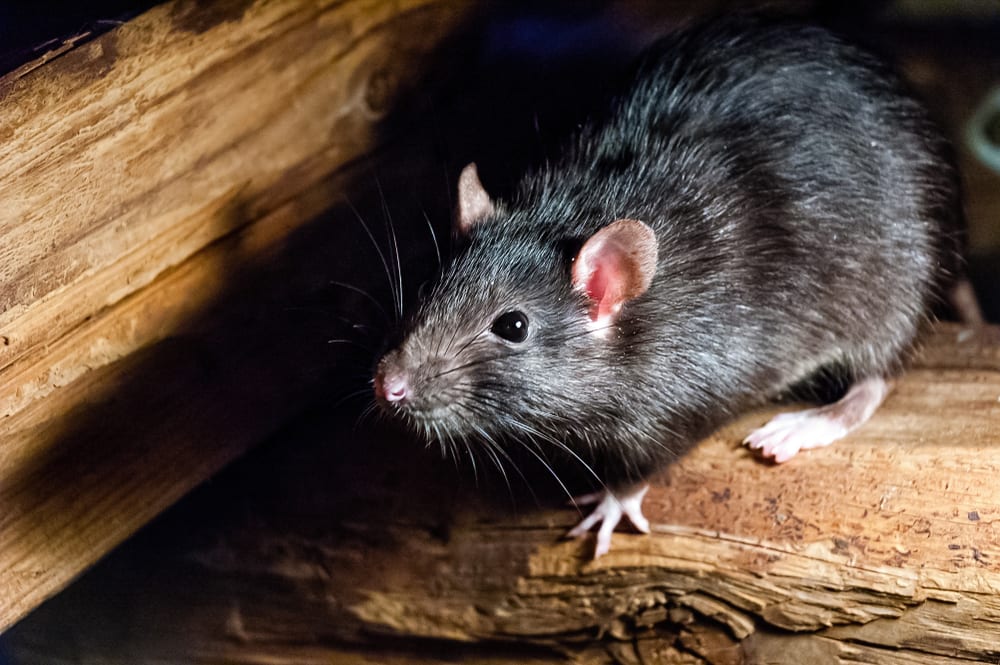from Livescience.com https://ift.tt/3bTuqhe
via IFTTT
world and global knowledge that you should know
Humans are unique in the animal kingdom with traits and capabilities that are truly admirable. But let’s admit, not all of us are gifted with the super hearing power. Did you know that there are animals with better hearing than humans?
Check out below the 10 animals with the most extreme sense of hearing.
The greater wax moth can hear 150 times better than humans. This guy’s hearing can reach up to 300 kilohertz and, surprisingly, hearing 100 kilohertz more than a bat. Researchers at the University of Strathclyde discovered that this creature is the world’s most extreme hearing animal.

With the elephant’s large ears that function as amplifiers, it is really not a surprise to see it on the list. It has a hearing frequency from a minimum 14 to 16 hertz up to 12, 000 hertz. Research on African elephants also shows that it delivers and receives information through low-frequency sounds that travel many miles under savanna’s ground.

Second to greater wax moth is the bat. It uses “echolocation” when it travels on its nocturnal world and also when it searches for its prey. Bat’s hearing frequency ranges from 9 kilohertz to 200 kilohertz.

Dolphin uses echolocation just like bats. Though it doesn’t have external ears as most animals have, it can hear through small holes found on both sides of its head while not underwater. Underwater, it uses its lower jawbone, which conducts sounds up to the middle ear. Dolphin’s hearing ranges from 20 hertz up to 150 kilohertz.

Cat’s hearing capacity is pretty impressive. It can hear with a range of 45 hertz to 64,000 hertz. Each cat’s ear has three dozens muscles!

Dog‘s hearing frequency is 40 hertz to 60,000 hertz. It has 18 muscles in ears that help it rotate, wiggle, and tilt ears to hear the sound further.

Owl’s hearing range is from 200 hertz up to 12 kilohertz. It is uniquely sensitive, with great eyesight and head that can turn to almost 360 degrees!

A rat has a better range of hearing than cats. It ranges from 200 hertz up to 76 kilohertz, which is an ultrasound range because it is more than humans can hear.

A horse can hear frequency sound from 14 hertz to 25 kilohertz. Horse’s ears have 10 muscles, which help the ear move 180 degrees to locate the direction of the sound.


A pigeon can hear as low as 0.5 hertz, which can help hear sounds from long distances.
These animals have amazing hearing capabilities that help them protect themselves, hunt for food, and live safely whatever kind of environment they have.
The post World’s 10 Most Extreme Hearing Animals appeared first on 10 Most Today.
Our overview of the largest shopping centers in the world depends on Gross Leasable Area (GLA). It is the total number of square feet of the property generating income like retail, beguilement, and eating.
Below are the 10 largest malls all over the world.
Isfahan City Center is included in the list of largest malls worldwide. It’s an amusement and huge business located in Isfahan, Iran. In Iran, it’s the largest and also the largest mall that contains an exhibition hall worldwide. The center worked in four stages. It covers 465, 500 sq. m. in which a five-star inn is included. Also, a shopping center that has 750 retail stores, a gallery, eateries, aircraft workplace, hypermarket, an amusement indoor, with crash mobiles and exciting ride, reasonable complex, seven film screens, WTC (World Exchange Focus), and IFC (Worldwide Monetary Focus). Prestige Land Iran Co. created the Isfahan City Center and planner Medardo Cadiz of Cadiz International Inc planned it.

Image Credit: Kateryna.Sokolova / Shutterstock.com
After 22 years that SM Cebu was built (1993), Cebu’s Prime Holdings created and claimed the SM Seaside City Cebu or locally called the Seaside or SM Seaside on November 27, 2015. It became the highlight of SM Seaside Complex, which measures a blend of 30 hectar at the Properties of South Road. It’s the third biggest shopping mall within the Philippines and eight in the world.
The GLA (Gross Leasable Area) of SM Seaside City Cebu is 470, 486 sq. m. It’s the third shopping center created by SM Prime Holdings and it is the 55th center for shopping within the Philippines. Arquitectonica, the same organization constructed the SM Megamall, SM Mall of Asia, and SM City North EDSA, structured the shopping center. It’s included in the biggest malls worldwide.

Image credit: ARTYOORAN / Shutterstock.com
The second biggest mall throughout the Philippines, also the seventh largest on earth is the SM Megamall with a gross leasable area of 474, 000 sq. m. It measures about 25 land sections (10 hectares), and 5, 100, 000 square feet.
SM Megamall can occupy 4, 000, 000 individuals maximum and has two primary structures. The Toy Kingdom, Food Court, some stay occupants, and SM Cinemas are the highlights of Building A, while SM Department (known as the SM Store, presently), Mega Trade Hall, some occupants, and the Cyberzone are the highlights of Building B. In January 2014, the mall was extended with another hall called Mega Fashion Hall.

Image Credit: r.nagy / Shutterstock.com
SM City North Edsa’s Gross Leasable Area is 498, 000 sq. m. In Metro Manila (Quezon City), a vast shopping center was built and called SM City North Edsa. It’s the largest shopping center, probably sixth biggest worldwide and the main SM Supermall in the Philippines. SM Prime Holdings is the one working for the shopping center. When it opened in November 8, 1985 ( a testing period in the political history of the Philippines only a few months from the EDSA Revolution), it utilized 120, 000 gross floors.
In July 2006, the redevelopment started when The Block opened. Other improvements include the opening of Annex building in December 2008 and Sky Garden in May 2009. And in 2009, the Car Park Plaza has also improved. The improvement and the redesigning of City Center have made the SM City North EDSA its advancement. SM North is included in the largest beautiful shopping malls worldwide.

Image Credit: Sinseeho / Shutterstock.com
Utama has a gross leasable area of 519, 515 sq. m. In 1995, Utama Shopping Center located in Malaysia was opened. The territory gross has been developed to 5, 592, 015 sq ft. It’s the sixth biggest worldwide and biggest mall in Malaysia. In the Southeast Asia, the mall has 30, 000 sq. ft. Secret Garden, largest housetop garden, a bowling alley that has 36-path, a crossfire (focus arcade), karaoke neway focus, a playland that has spaceship theme and two film houses (TGV and Golden Screen Cinemas.)
Flow Rider (the outside surf that focuses on the ace shop), Air Rider (skydiving indoor office), Camp 5 (biggest climbing shake indoor rec center in Asia), Hit Rooftop Baseball (first robotized softball and baseball in South East Asia), Sealantis (star jumping scuna focus – PADI 5), and Padang (futusal rooftop that has 5Xtreme courts) are the six recreational movement brandishing focuses.
Image credit: i viewfinder / Shutterstock.com
Iconsiam is a mixed-use development located on Chai Phraya River Bank in Bangkok. It has gross leasable are of 525, 000 sq. m. It includes a wide-range of shopping centers that opened to the public in November 10, 2018 including living arrangements and inns.
It was a joint project by MQDC Magnolia Quality Development, Charoen Pokphand Group, and Siam Piwat. It will incorporate the two tallest buildings in Bangkok: the 70-story Magnolias Waterfront Residences and 52-story Mandarin Oriental Residences.
The Golden Resources Shopping Mall has 557, 419 sq. m. gross leasable area. It is among the largest shopping malls by gross leasable zone worldwide and located in the northwest Fourth Ring Road. It was considered the second largest mall in 2005 when the South China Shopping Mall located in Dongguan, China was completed. It can be accessed through Beijing Subway, Changchunqiao Station Line 10. It has gained the name “Extraordinary Mall of China” in English because of its extent, which reaches 560, 000 sq. m.
In October 20, 2004, this mall was finished after 1 year and 8 months of construction and had been opened after four days. It was evaluated by the designer that 50, 000 people per day would visit the mall but only 20 customers every hour visited this place after its opening. At that moment, the prices of the products inside the mall are beyond the means of most traditional Chinese.
SM Tianjin has 565, 000 sq. m. GLA. SM Supermalls under SM Prime Holdings are chains of shopping centers located within the Philippines, and since November 2018, it already has 72 shopping centers located all over the country with about two dozen more planned to open.
Additionally, in China, it has seven more shopping malls, which include the SM Tianjin, the second largest in the world when it comes to gross leasable area. In Southeast Asia, the SM Supermalls emerge as the greatest administrators of shopping centers. With its organization having 9.24 million square meters of GFA or gross floor territory. In China, it has 1, 867 occupants and in the Philippines, it has 17, 230 inhabitants. It is among the world’s largest malls.

Dubai mall is 650, 000 sq. m. It is the second largest by land territory. It is also the 21st largest shopping center in the world according to gross leasable area. Located in Dubai, UAE, this mall costs $20 billion and it has 1, 200 retail shops. Dubai mall was visited most in 2011, drawing over 54 million people every year.
Although it was postponed twice, it was finally opened on November 4, 2008, with over 1000 retailers, it was marked as the second largest shopping center in the world in the history of retail following the West Edmonton Shopping Mall. The Underwater Zoo and Dubai Aquarium were constructed by Peddle Thorp, also supervised by Emaar Entertainment. Dubai Mall has the aquarium that contains more than 300 kinds of marine species which includes beams and sharks.
The South China Mall, with 659, 612 sq. m. GLA, is located in Dongguan, China. It is the biggest shopping center in the world when it comes to GLA in which it is second to Dubai Mall, which has a wide non-shopping space that has an amusement park, a zoo, and lodging complex. It was in 2005 that this mall opened and for the past 10 years, most parts are empty and was named “dead shopping center.
In January of 2018, as pointed out by an article, most of its retail spaces were filled and this mall was highlighted with an amusement park and IMAX-style film. This shopping center was previously occupied by farmlands in the Wanjiang District of Dongguan, located in the southern seaside of China. The developer of this mall and later became a tycoon in the industry of instant noodles was Hu Guirong. The South China Mall surpassed the Golden Resources Mall as the largest shopping center in the world. The total development expenses was estimated at approximately $1.3 billion.
The post 10 Largest Malls in the World appeared first on 10 Most Today.
There are some reasons why one uses drugs and it varies for each individual. Usually, a person is finding a way to solve a certain problem in life and they consider drugs as the solution to that problem.
In teens, usage of alcohol drugs is their way to fit the group or can also be a result of peer pressure.
Below are the 10 most common reasons why people use drugs.

You have a predisposing factor in developing an addiction if your family have a history of drug addiction. About 40% to 60% of the risk for developing alcohol use disorder can be due to genes, while 60% to 80% for nicotine,cocaine and other substances.

Out of curiosity, a person tries to experiment with alcohol or drugs. This is the most common scenario to young individuals who developed a habit of addiction. According to the National Institute on Drug Abuse, those youths that experiment with alcohol and drugs are vulnerable to substance use disorders.

Loneliness and isolation from family and friends can lead to addiction. When people can’t find daily positive interactions, they might turn to substances to make themselves happy and contented. Furthermore, the users will alienate themselves more when they fear the judgement of others or if no one can help their situation.

Some medications prescribed by doctors are used to alleviate pain or other mental and health issues. Though these medicines are helpful, they also have risks or side effects that should be watched out for. Opioid medications used to manage chronic pain are highly addictive. In some cases, to stop the use of opioids, a medical detox is required. Moreover, addictive medications are also being prescribed to people with anxiety or depression to ease the symptoms. Pain recovery services or non-addictive medications are frequently available.

Peer pressure is common to young adults or adolescents. Some force themselves to participate in their peer group’s dangerous activities just to fit in.

Some people use drugs or alcohol with their friends as a way to unwind after a stressful day. They see substances as a solution to relax their minds.

People with post-traumatic stress disorder, anxiety and depression can be at risk for having an addiction. It might seem easier to some to depend on substances to cope with their feelings and emotions. But there is help for anyone with mental health disorders. It’s worth to visit a doctor and discuss about any non-narcotic medications and other alternatives.

Not all but most users like the feeling when they take substances making them crave for more until they can no longer stop.

The effect of alcohol may change over time especially when a body gets used to it. The feeling when some individuals were able to achieve with a few drinks before might not work anymore, making them to drink more. This, unfortunately, can leave them powerless and unable to stop drinking.

People suffering from different illnesses may seek alcohol or drugs to alleviate their pain. Substances, including alcohol, seem a short-term solution only. Nevertheless, it is advisable to seek medical help to fight any mental health disorders or chronic pain.

There are a lot of reasons why people use drugs. Educating ourselves about the risks and effects of using alcohol or drugs can help individuals combat addiction and make better decisions in life.
The post 10 Most Common Reasons Why People Use Drugs appeared first on 10 Most Today.
Hospitals across the world are constantly shifting themselves even with economic constraints due to the growing need for the advancement of the health care system.
Given on the list are hospitals in different places that became the benchmark of quality health care. They lead and excel beyond the challenges while delivering the best care for their patients.
Below are the 10 most advanced hospitals:

Image Credit: Daniel J. Macy / Shutterstock.com
Based in Baltimore, it was established in 1889 and followed four years later by their School of Medicine, the Johns Hopkins University, which is ranked as top 2 in medical schools in the USA. And some of the world’s leading breakthroughs in clinical research came from Hopkins. It is also the leading hospital in child psychiatry and neurosurgery and also the site of the first man-to-woman reassignment surgery in America. Hopkins has six commercial and academic hospitals, four surgery and health care centers and more than 40 patient care areas that overall receive patients of almost 3 million, yearly.

Image Credit: Ken Wolter / Shutterstock.com
Mayo Clinic started in Rochester, Minnesota more than 150 years ago and has been delivering outstanding, personalized and holistic medical care to its patients. Currently, they have centers in Minnesota, Arizona, and Florida and they also cater to five states where they have more than 19 hospitals. Annually, they care for more than a million patients. But what makes them stand out from the rest is their unparalleled College of Medicine and Science, the Mayo Clinic Alix School of Medicine and their research centers that contribute important innovations to entire health care community.

Image Credit: Donal Keane / Shutterstock.com
Established in 1821, SGH is the first hospital and the largest in Singapore catering to over a million patients per year. SGH is an academic tertiary hospital, that provides postgraduate education for both medical professionals and students. It also has specialist centers on-campus that conducts patient-driven clinical studies and SGH is also known for providing affordable health care to their patients.

Image Credit: YES Market Media / Shutterstock.com
The first in the world to perform a total face transplant, Cleveland Clinic is one of the world’s biggest providers of the medical health with the total recorded visit of more than 7.6 million patients in 2017 from their hospitals in UAE, US, and Canada. For 25 straight years since 1995, their heart program at Miller Family Heart, Vascular and Thoracic Institute ranked the top 1 in the USA in cardiac care. They were also the first, among notable medical centers, to coordinate with the Patient-Centered Outcome Research Institute in order to integrate clinical services over a single organ system or a particular disease.

Boston-based, MGH is one of the oldest hospitals in the USA, being the third. MGH serves at Harvard Medical School as the oldest teaching school of this prestigious University with almost all of the hospital’s doctors as part of their faculty. With over $900 million as the budget for research, annually, they have the biggest research program among hospitals. Their recent projects comprise of study on the effect of socio-economic status on the state of health and fighting against the opioid epidemic.

Image Credit: Sergiy Palamarchuk / Shutterstock.com
Based in Berlin, this is the country’s leading research-intensive academic hospital, connected to Freie Universität Berlin and Humboldt University. It has more than 14,000 employees and also hired half of medicine or physiology Nobel laureates from Germany to work with them. Charité leads in biomedical innovation centered on the union of technology and medicine.

Image Credit: JL IMAGES / Shutterstock.com
TGH is one of the hospitals that joined the University Health Network in Canada. It is Canada’s largest, most financed research organization and also North America’s biggest transplant center. TGH is the first hospital to ever executed triple organ transplantation (pancreas, lung and liver). And the leader in cardiovascular surgery and health, the Peter Munk Cardiac Center is also located in TGH.
Known as CHUV in french, this is one of the University hospitals in Switzerland located in Lausanne. This is the teaching hospital for french-speaking nationals. And in October of 2014, CHUV was elected by the WHO (World Health Organization) to perform the vital vaccine trials for the Ebola virus. This world-class academic hospital has its own free magazine which is devoted to sharing to the world their leading-edge medical practices, the In Vivo, printed both in English and French language.

Image Credit: Takamex / Shutterstock.com
With state-of-the-art medical equipment, cutting-edge health care, and teaching top researchers and doctors in Japan, the University of Tokyo Hospital has become the center for advanced medical practice and research in the country. And in 2012, they pioneered the Department of Disaster Medical Management.
Established in the year 1948, Sheba Medical Center located in Israel, Ramat Gan is now the leading health care facility in the Middle East and internationally. The well known Tel Aviv University is affiliated with this tertiary hospital. Sheba Medical Center has different centers for virtually all medical specialties and divisions and attends to more than a million patients, annually. More than a quarter of the country’s clinical and medical research is being done in Sheba’s cutting-edge facilities. This hospital is also dedicated to the advancement in the medical career by working with almost all medical institutes in Israel to educate future health practitioners.
The post 10 Most Advanced Hospitals in the World appeared first on 10 Most Today.